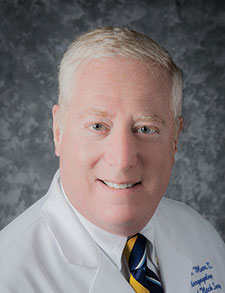What are the comparative outcomes of juvenile nasopharyngeal angiofibroma (JNA) resection between embolized and non-embolized cohorts, and between transarterial embolization (TAE) and direct puncture embolization (DPE)?
Older People More Prone to Olfactory Habituation After Extended Exposure to Odors
Prolonged or repeated exposure to an odor can temporarily decrease olfactory sensitivity.
Awake Orotracheal Intubation Shown Successful in Four Patients with Laryngeal Cancer
Awake videolaryngoscopy intubation is an excellent strategy to adopt in patients with laryngeal cancer, particularly if potentially complicated intubation is expected.

Patient Concerns about AI in Their Healthcare
It’s predicted that the capabilities of AI and AI-supported applications will include enhancement of pertinent data summaries that are far more comprehensive than individual physician literature searches can provide.

TRIO Welcomes New Leaders in 2025

Tips for Pursuing the Elusive R01 Grant
For aspiring physician–scientists, securing grant funding early in their careers can make all the difference in establishing a thriving research program; however, the path from mentored career development awards to independent research awards is
extremely competitive.

How Otolaryngologists Are Using Social Media for Networking, Patient Education, Study Recruitment, and More
Social media use within otolaryngology is increasing rapidly, mainly for professional networking but also for applications that directly impact patient care, such as patient education and study recruitment.

ENTtoday Wins 2024 APEX Award
ENTtoday has won an APEX Award of Excellence for writing on the health and medical topic for its Medical Device Misuse vs. Off-label Practice, written by Jennifer Fink for the […]

Accessing the Strength of the International Community
Dr. Miguel Goncalves Ferreira, a rhinoplasty surgeon in Portugal, brought together the international rhinoplasty community during COVID-19 by creating the Evidence-Based Rhinoplasty Research Group (EBRRG) to provide a forum for discussion of high-quality manuscripts by members of our field to increase the quality of care patients receive.

When Should We Recommend Intracapsular Tonsillectomy in Pediatric Patients?
Intracapsular tonsillectomy is a safe and effective method for performing tonsillectomy and should be included in future clinical practice guidelines for tonsillectomy.
- « Previous Page
- 1
- …
- 9
- 10
- 11
- 12
- 13
- …
- 328
- Next Page »